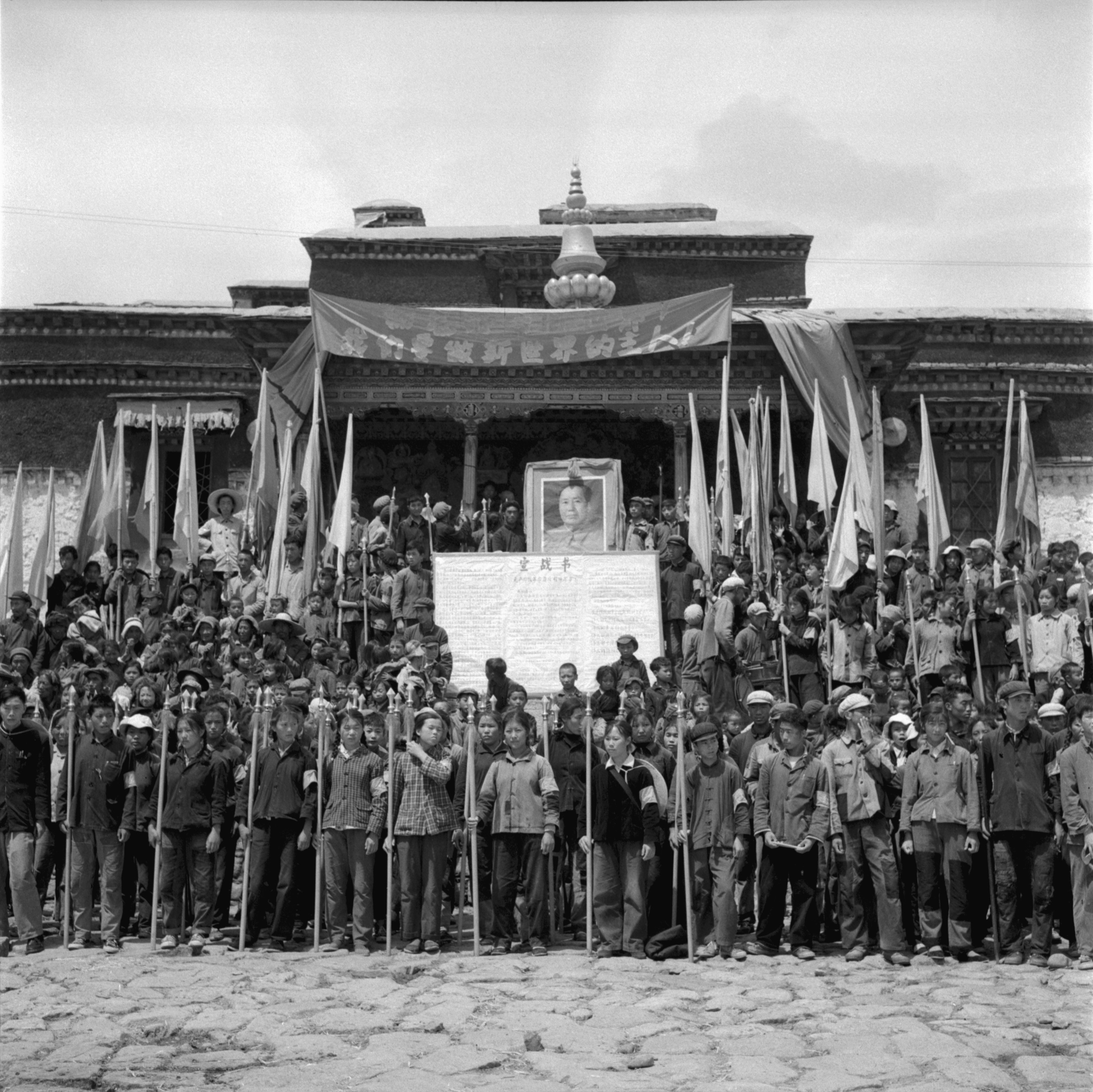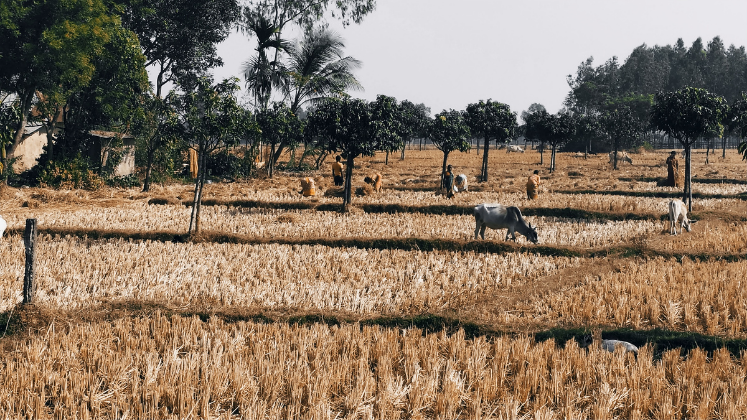In A Decade of Upheaval: The Cultural Revolution in Rural China, Dong Guoqiang and Andrew G. Walder explore the local conflicts experienced in Feng County during the Cultural Revolution. The book offers a rare micro-history of the Cultural Revolution’s impact in a rural area, writes Hanzhi Dai.
A Decade of Upheaval: The Cultural Revolution in Rural China. Dong Guoqiang and Andrew G. Walder. Princeton University Press. 2021.
 Find this book (affiliate link):
Find this book (affiliate link):![]()
Feng County, located in China’s remote hinterland at the intersection of Jiangsu, Anhui and Shandong provinces, attracted public concern in 2022 with the exposure of the trafficking of women. However, this lesser-known and marginalised county has long been worthy of attention. Co-authored by historian Dong Guoqiang and political sociologist Andrew Walder, A Decade of Upheaval focuses on Feng County’s experience during the Cultural Revolution, from its unfolding in 1966 to the death of Mao Zedong in 1976 that marked its end. As the first work on county-level factional politics throughout the ten years of the movement, the book powerfully showcases how the local conflict was exploited and escalated by the struggle between external forces. The involvement of rebel militia and the military forces, with their own divisions and overlaps, added to the unpredictability of the revolutionary pivot. All sought to ride the wave; all failed.
The unfolding of the upheaval in Feng County differed from typical depictions of the era in mainstream portrayals. A swift takeover by student militia never occurred. The county was predominantly agrarian. Students and workers constituted a very limited proportion of its population. Many of the early militant actions of the Red Guards against the county party leadership aimed primarily at preventing future revenge by local bosses.
Though its organisation was shattered by these assaults, the local party apparatus was yet to completely lose its authority in the initial two months of 1967. The factional rebels competed to hold the party leadership and organise its denouncement, which they ironically utilised as a way to self-legitimise. Despite the urging of radical university students and the nationwide tendency towards power seizure, the Paolian (Bombard the County Party Committee United Headquarters), the most established rebel alliance in Feng County in late February 1967, chose a more cautious path and collaborated with local officials to maintain the running of local affairs.
History accelerated when factional clashes previously enclosed in the county began to involve the struggle between different organs of violence nominally under the CCP monopoly. Rather than viewing them as a cohesive force, Dong and Walder successfully account for the animosity between different military branches when the civilian government collapsed. While assuming authority as the ultimate arbiter in the county when Beijing ordered nationwide military control in early 1967, the murky, ever-changing nature of the order from above and the intertwined, overlapping design of the CCP’s military hierarchy generated anarchy. Rather than distinguishing and supporting the ‘true’ revolutionary forces from the ‘fake’, military sections soon chose different rebel alliances and perpetuated the factional warfare.
The authors pay particular attention to the frequently overlooked role played by the county People’s Armed Department (PAD) and its Political Commissar in 1966, Shao Wen. With their grassroots-level militia stationed in the county, the PAD was the only well-functioning institution as chaos reigned. Under the orders of the Xuzhou Military Subdistrict under the Nanjing Military Region, the PAD took over the county in March 1967 and started sidelining the Paolian. Meanwhile, the PAD had to cope uneasily with the 68th Army units dispatched by the People’s Liberation Army (PLA), a force under the neighbouring Jinan Military Region in Shandong Province with no affiliation with Shao’s PAD and its military authority. Keen to gain an upper hand, the PLA approved affiliates of the Paolian as orthodox revolutionaries.
As conflict between the PAD and the Paolian intensified, anti-Paolian groups also formed their own alliance under the name Liansi (the Feng County Proletarian Revolutionary Headquarters), soon to be weaponised as PAD loyalists. In the dramatic August of 1967, two dozen Paolian militants captured Shao while he was attending a meeting. He was interrogated, beaten, paraded and locked up for three weeks. The kidnap was avenged by the storm on a Paolian fortress, the beating of their members by more than 300 Liansi members and massive attacks on Paolian strongholds from middle schools to power plants. Meanwhile, Liansi had been sheltered by the PAD in their battles from one commune to another. Relying on the PAD hierarchy and its grassroots militia networks, thousands of farmers had been mobilised in line with Liansi, which proved decisive in their conquest of the county seat.
With the 68th Army’s backing of the Paolian weakened by a political earthquake at the provincial level that restricted their overriding power, Shao rose meteorically, becoming the county’s founding revolutionary committee chairman in 1969 and the county’s first party secretary two years later. Under Shao’s dictatorship, PAD members were elevated, PLA soldiers were marginalised, while the Paolian and their supporters were persecuted under false charges in waves of campaigns and forced to confess under torturous interrogations. In a single ‘class-cleansing’ campaign in 1970, 1,256 were labeled and punished; 129 killed themselves and 255 were fired from their jobs. The PAD’s grip on county power remained even after Shao’s transfer to a neighbouring locality; it was only dismantled by Deng Xiaoping’s ‘Overall Rectification’ in 1975 and the drive to bury the Cultural Revolution with Chairman Mao after 1976.
Feng County’s troubled decade reflected much of China’s ever-intriguing central-local dynamics and explains why the conflicts were so difficult to end. Decrees from above, even rumoured, were the most effective catalysts for grassroots acts. After all, the Paolian only counterattacked the PAD after hearing provocative encouragement from Kang Sheng, a veteran communist nicknamed ‘China’s Beria’. The mysterious death and condemnation of Marshall Lin Biao, legendary commander and Mao’s heir apparent, forced the military’s fall from grace, and therefore triggered the inevitable countdown to the PAD dictatorship in Feng County.
Yet the centre was neither omnipotent nor omniscient. The impossibility of centralising the means of violence within the county made it even less possible to terminate the conflict through peace-making. No neutral authority could ‘ensure the even-handed treatment of the two sides’ in a ceasefire. Violent clashes occurred while representatives from both factions were negotiating for peace in Beijing in January 1969, with hardline subgroups battling regardless of the agreement their leaders reached. Senior officials misjudged the Feng County chaos as a reflection of Xuzhou problems; their indifference towards the county itself could not pacify the communes at war. Beijing also attempted to muddle through when there was no breakthrough: even someone as high-profile as Premier Zhou Enlai would directly investigate the warring Feng County, then comfortably watch it burn as the chaos persisted. As the authors state, the ‘great alliances’ and coerced study classes were fruitless beyond rescuing the top authority from local problems.
Though it could be further improved by adding additional analyses of the gendered aspect of the conflict and the voices of the peasantry non-elites, A Decade of Upheaval contributes enormously to the study of the Cultural Revolution. It offers a rare micro-history of the movement in a rural area and challenges the urban-dominated discourse. It interrogates the reductionist picturing of the time as a juxtaposition between impetuous student militants and disciplined military pacifiers. In contrast, no forced takeover by or stubborn resistance against military control ever happened in Feng County. The high degree of restraint evolved swiftly to an unending quagmire of violent clashes and purges following the imposition of military control. Fearing being cast out as counterrevolutionaries with unpredictable consequences, the revolutionary inquisitors played civil war as a game of chicken for their survival.
Note: This review gives the views of the author, and not the position of the LSE Review of Books blog, or of the London School of Economics and Political Science. The LSE RB blog may receive a small commission if you choose to make a purchase through the above Amazon affiliate link. This is entirely independent of the coverage of the book on LSE Review of Books.
Banner image credit: Photo by 昊蓝 毛 on Unsplash






